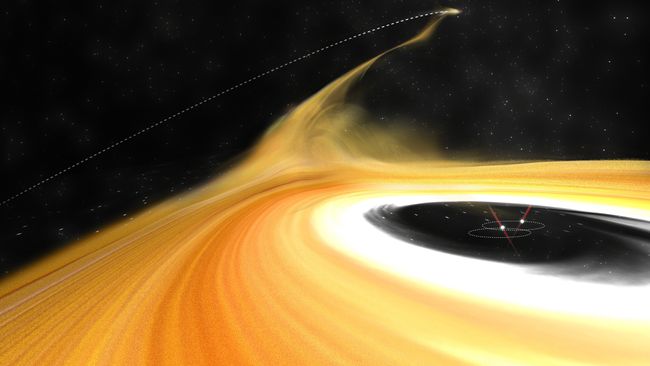A Stellar Escape: How a “Runaway Star” Might Rescue Earth from Extinction a Billion Years in the Future.
Earth is destined to become excessively hot in a billion years. A remarkably slim possibility exists: a passing star could potentially rescue us by nudging our planet back into the habitable zone.
Approximately one billion years into the future, the sun is anticipated to expand, becoming larger, brighter, and hotter, ultimately rendering Earth inhospitable. Nevertheless, a recent theoretical study suggests a faint glimmer of hope: a fortuitous encounter with a passing star might rescue our planet by either redirecting it into a cooler orbit or liberating it from the solar system entirely—though the probability of such an event is exceedingly low.

At present, Earth resides within the sun’s habitable zone—a ring-shaped region where planets can potentially support liquid water. However, as the sun evolves over the next billion years, causing this zone to extend outward, Earth’s conditions will deteriorate. This shift implies that the existence of liquid water, and consequently life, may become a thing of the past long before the sun transforms into a red giant and consumes Earth entirely in approximately 5 billion years.
Contemplating the prospect of Earth transforming into a free-floating “rogue” planet, scientists simulated the potential behavior of our solar system if a passing star were to interact with it within the next billion years. Recognizing that such an event could displace planets from their orbits, their findings have been accepted for publication in the journal Monthly Notices of the Royal Astronomical Society and are accessible in the preprint database arXiv.
“At present, the nearest approach of any star stands at approximately 10,000 astronomical units (au), equivalent to 10,000 times the distance from Earth to the sun, and this event occurred a few million years ago,” shared lead study author Sean Raymond, an astronomer at the University of Bordeaux in France, in correspondence with Live Science. Despite this considerable distance, the research team, out of curiosity, conducted calculations on planetary movements when stars of varying sizes approached at different distances, going as close as 1 au.
The team carried out a total of 12,000 simulations. In some instances, the star’s passage propelled Earth into a more distant, colder orbit. In others, Earth (along with some or all of the other planets) ended up in the Oort cloud—a spherical shell of icy objects thought to exist at the outermost fringes of the solar system.
Remarkably, in a small number of simulations, the wandering star successfully gravitationally enticed Earth along, capturing our planet into a free-ranging orbit through the cosmos. According to Raymond, in such a scenario, Earth “could in principle end up on an orbit receiving enough energy for liquid water” from its newfound stellar companion.
Nevertheless, placing reliance on a stellar savior is not advisable. The collective probabilities of these scenarios amount to a mere 1-in-35,000 chance that life on Earth would persist after the star’s passage, as per the researchers’ findings. Raymond, in his blog PlanetPlanet, likened these odds to “randomly pulling the ace of spades from two separate decks of cards while also rolling a combined 10 with two dice. Not the best odds.”
Rather than pinning hopes on a star to avert Earth’s inevitable fate, Raymond proposed exploring solutions on our own, such as modifying Earth’s orbit or mitigating a portion of the Sun’s incoming energy. Some simulations portrayed bleaker outcomes for our solar system, including planetary collisions, including Earth, either with each other or with the sun. For instance, Mercury frequently experienced a fiery demise.
However, such outcomes remain improbable. Over 90% of the simulations indicated no alterations in the orbits of any solar system planets. Overall, the passing star is likely to have minimal impact on our celestial neighborhood, for better or for worse.
This article is republished from LiveScience under a Creative Commons license. Read the original article.
Do not forget to share your opinion with us to provide you with the best posts !



0 Comments